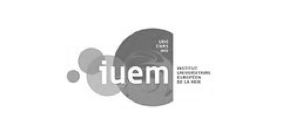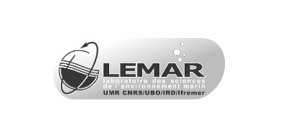The database presented here shows 5,940 observations of sinking particles compiled in Torres-Valdes et al., 2014.
Access to the database can be done by visiting the Pangaea repository using the reference doi:10.1594/PANGAEA.807946. Please, refer to the information displayed throughout the website on individual data points to find the corresponding PANGAEA doi reference number for further details on every single observation.
The observations describe fluxes of particulate organic carbon (POC), particulate organic nitrogen (PON), calcium carbonate (CaCO3) and particulate -or biogenic- silica (bSiO2) present in sedimenting material. The total particle mass flux includes, in addition to these compounds, the contribution from the remaining particulate inorganic carbon (PIC) and litho/terrigenous material.
Of particular interest is POC as the product of the biological pump produced by phytoplankton in the surface ocean. Phytoplankton absorb CO2 and other nutrients such as nitrate (NO3), ammonia (NH4), phosphate (PO4) and iron (Fe), to perform photosynthesis. It transforms atmospheric CO2 into other chemical compounds which eventually sink to the bottom of the ocean, contributing to the oceanic uptake of CO2 from the atmosphere. The biological pump is a significant contributor to the atmospheric CO2 sequestration by increasing the storage of carbon at depth, and therefore it has a relevant role in regulating the Earth climate system.
The database comprises almost 30 years of cruises and trap deployments. Sinking particles were collected using a wide variety of sediment traps along this time period. These sediment traps capture sinking particles over a certain number of days where the traps remain open. Once the particles are collected the amount of carbon, nitrogen and silica is estimated. The full description and references to the traps used can be found in Torres-Valdes et al., 2014. Here we only refer briefly to the models included in this data representation:
Cone-shaped SMT 230 Kiel
Cone-shaped multi-sampling SMT 230 KMU traps
Conical particle interceptor traps
Conical sediment McLane Mark-7 traps
Drifting Technicap PPS 5 sediment traps
Indented rotary sphere settling velocity and timeseries mode sediment traps
Kiel HDW traps
Large-aperture timeseries Kiel-type traps
Mark VI/V traps
Mark-VII automated sediment trap
McLane Mark 78G-21
Moored automatic Kiel sediment traps
Multisample moored conical traps
Parflux Mark 7G-13 timeseries sediment trap
PPS-5 traps
SMT 234 Aquatec Meerestechnik Kiel trap
Surface-tethered particle interceptor traps (BATS)
The latitudinal bands presented by regions in both the Northern and Southern hemispheres are:
Polar: above 70°N/S
Subpolar: between 50°N/S and 70°N/S
Subtropical: between 20°N/S and 50°N/S
Equatorial: between 0° and 20° N/S
This data visualization project has been done using Python scripts for data analysis but mostly D3 (DataDrivenDocuments) javascript library developed by Mike Bostock. The spatial distribution of the observations is shown on a Mercator projection using TopoJSON and GeoJSON from Natural Earth data.
This project has been developed at the Laboratoire de l'Environnement Marin at the Institute Europeen de la Mer in Brest, France.
It has been funded by the Universite de Bretagne Occidentale and the Laboratoire d'Excellence LabexMER. This project is supported by the SATT Ouest Valorisation consortium and Technopole Brest-Iroise.
Thanks to Thomas Gorgues, Laurent Memery, Patricia Cadule, Brivaela Moriceau and Ingrid Wiedman for all the discussions and suggestions.
For other data visualization and graphic design projects in science, please visit graphicprototype.com.






